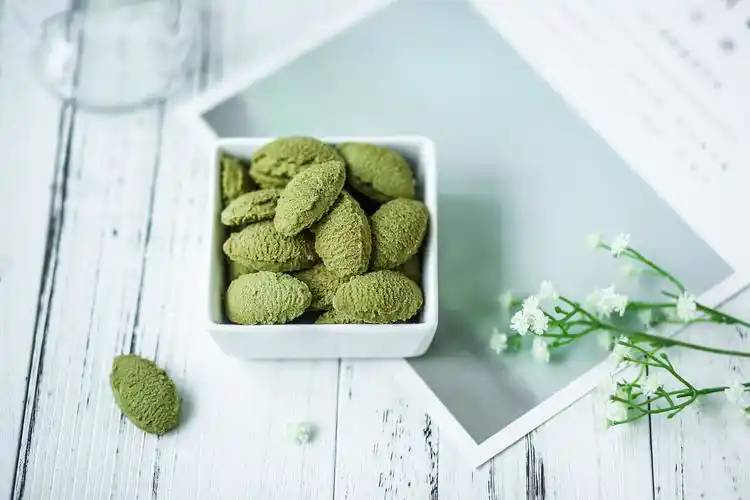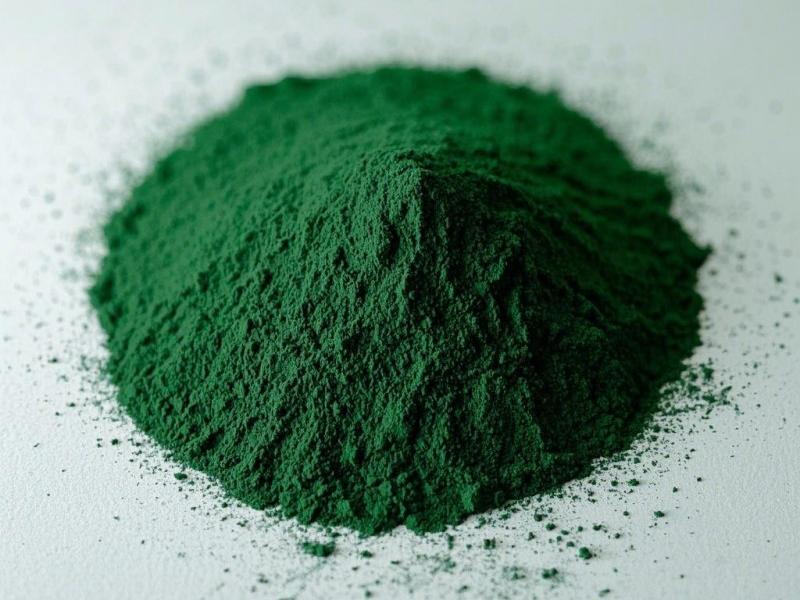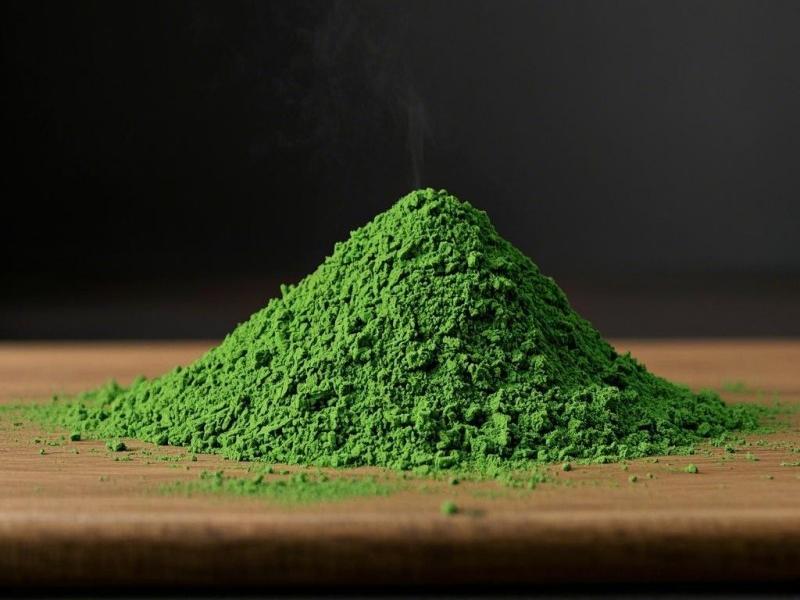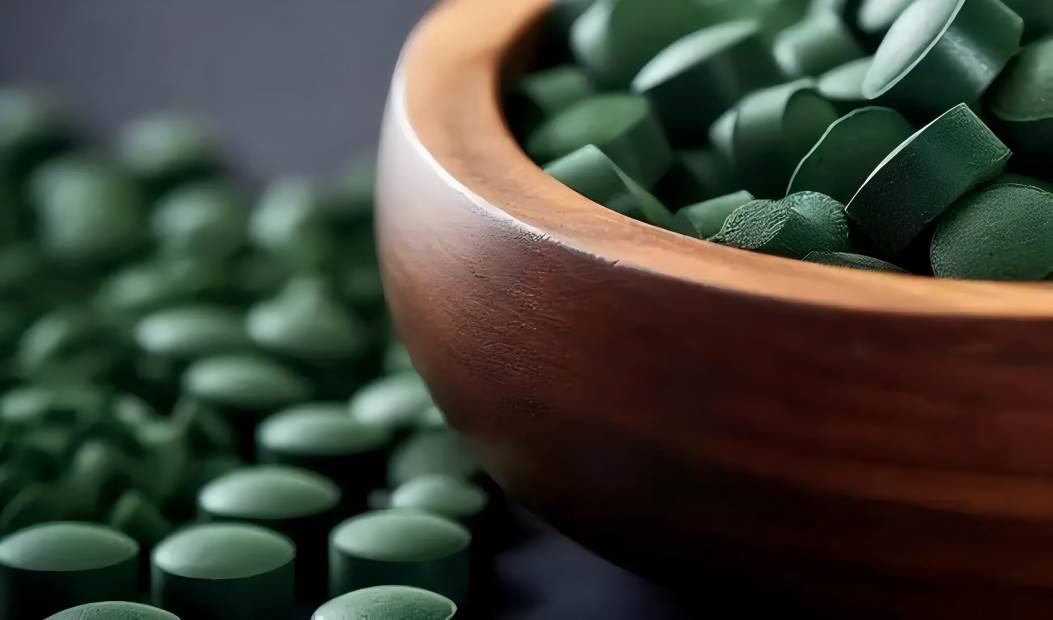What Is the Use of Spirulina Powder in Telugu?
Spirulina is a new type of high-quality “food and medicine of the same origin” bacterial protein, with high nutritional, health and medicinal value. Due to its fast growth and reproduction and strong photosynthetic ability, it is not only the species with the highest protein yield per unit area, but also an expert at optimizing air quality. Although China has a vast territory, it has a relatively small area of arable land per capita. However, China has a long coastline and abundant inland lakes and rivers. Exploiting spirulina resources is not only conducive to developing new sources of nutrition and alleviating the land and food crises, but also helps promote the transformation of traditional agriculture into modern agriculture. With the progress of science and technology, its scope of application is becoming more and more extensive.
1 The development value of spirulina
The large-scale production of spirulina has huge economic potential. The world's seaweed resources are abundant. The annual yield of seaweed grown in coastal waters is more than 15 times the current annual world wheat output. Experiments have shown that 1 km2 of water can produce 2,000 tons of protein after processing, which is equivalent to the total nutritional content of soybeans produced annually on 40 km2 of cultivated land. In fact, the area of “arable” sea is about 15 times that of land, and scientists predict that in the 21st century, seaweed will provide 10% of the protein for humans. It can be predicted that in the 21st century, the sea may well become mankind's “second granary”.
1.1 The nutritional value of spirulina
Spirulina is rich in protein, vitamins, unsaturated fatty acids, spirulina polysaccharides and beneficial trace elements. It is easy to digest and absorb, has a comprehensive nutritional profile, a reasonable structure, and is safe and non-toxic. Protein accounts for 60% to 70% of the dry weight of spirulina, making it one of the species with the highest protein content discovered so far. It is known as the meat of the sea[1]. Spirulina contains 18 amino acids, of which the eight essential amino acids have a reasonable structure and are almost similar to human blood proteins, and are very similar to the Recommended Dietary Allowance (RDA) values recommended by the Food and Agriculture Organization of the United Nations (FAO) and the World Health Organization (WHO) [2].
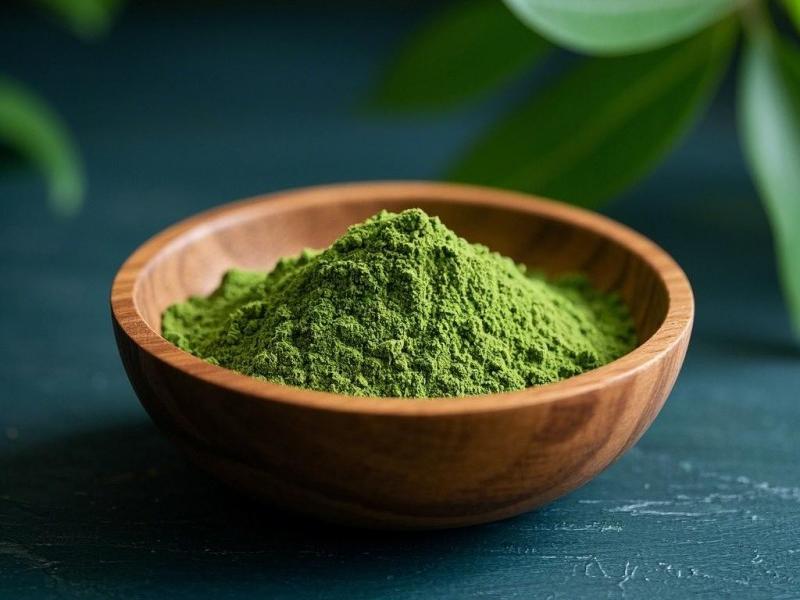
Spirulina is a natural treasure trove of vitamins, with the highest beta-carotene content of any natural food, about 10 times that of carrots, and 3.5 times higher VB12 content than animal liver. It contains calcium, iron, zinc, selenium, potassium, magnesium, iodine and many other minerals that are beneficial to the body. The content of organic iron is 23 times that of spinach, making it the food richest in iron, and the calcium content is 10 times that of milk. Spirulina is rich in essential linoleic and linolenic acids that the body cannot synthesize, as well as special substances with important biological activities such as phycocyanin, chlorophyll, small molecule polysaccharides, superoxide dismutase, and growth-promoting factors[3]. In addition, the cell wall of spirulina is very thin and composed of highly degradable peptidoglycan, which has a digestion and absorption rate of over 80%. One gram of spirulina contains the same amount of nutrients as 1,000 grams of various fruits and vegetables, and is considered to be concentrated green food.
1.2 Medicinal value
Spirulina is not only highly nutritious, but also has great value in healthcare due to its content of algal polysaccharides, unsaturated fatty acids such as γ-linolenic acid, various vitamins and enzymes, trace elements, etc. Its main physiological functions and effects are: (1) improving the body's immune function[4]; (2) anti-cancer and anti-carcinogenic effects; (3) anti-radiation effects; (4) improving the harmful effects of excessive metals on the human body; (5) healing skin and external wounds and antibacterial effects; (6) anti-fatigue and anti-aging effects; (7) promoting the growth of lactobacilli in the body.
1.3 Energy value
Due to the rapid increase in world energy consumption and the limited reserves of fossil fuels on the planet, the strategic issue of finding new energy sources and more efficient ways to convert solar energy has been raised. Bioenergy is favored due to its clean, pollution-free and renewable characteristics, especially the production of biohydrogen. Hydrogen energy has the characteristics of being lightweight, having a high calorific value, being clean and renewable, and being used in a variety of ways. It is considered to be the most promising “energy carrier” for future society. During the growth or breeding process of spirulina, it was discovered that it can convert solar energy into hydrogen energy in the form of hydrogen release. Compared with other materials that release hydrogen, it has a higher photosynthetic efficiency, grows faster, has a high hydrogenase activity, and lasts a long time when releasing hydrogen. It is one of the ideal materials for studying biological hydrogen release [5].
1.4 Environmental protection function
Spirulina can be used as food and feed, reducing the demand for grain and thus the pollution caused by grain production. This in itself is a contribution to environmental protection. More importantly, spirulina needs to absorb a large amount of nutrients during growth and reproduction, and has the characteristics of fast growth and reproduction, high photosynthetic efficiency and strong adaptability. Using these characteristics of spirulina, it can be used for pollutant purification, which has direct environmental significance. It can be used to treat organic wastewater[6]; prevent eutrophication of water bodies caused by excessive nitrogen and phosphorus; remove and recycle heavy metals in wastewater; and through photosynthesis, absorb carbon dioxide from the air, synthesize organic matter, and release oxygen, which promotes the conversion of “greenhouse gases” in the air and maintains the oxygen balance in the atmosphere, which has an important ecological significance.
2 Applications of spirulina
2.1 Medical applications
Spirulina is rich in active substances that have special medical and health benefits for many diseases. It is mainly used to treat (1) diabetes; (2) iron deficiency anemia; (3) hypertension; (4) stomach problems; and (5) cancer. According to some reports at home and abroad, spirulina and its extracts also have extremely significant functions in preventing and treating glaucoma and cataracts[7]; preventing cardiovascular and cerebrovascular diseases; and treating gastric and duodenal ulcers and liver diseases. Currently developed medical products include fluorescent molecular probes, spirulina long-life pills and spirulina lipid-lowering pills.
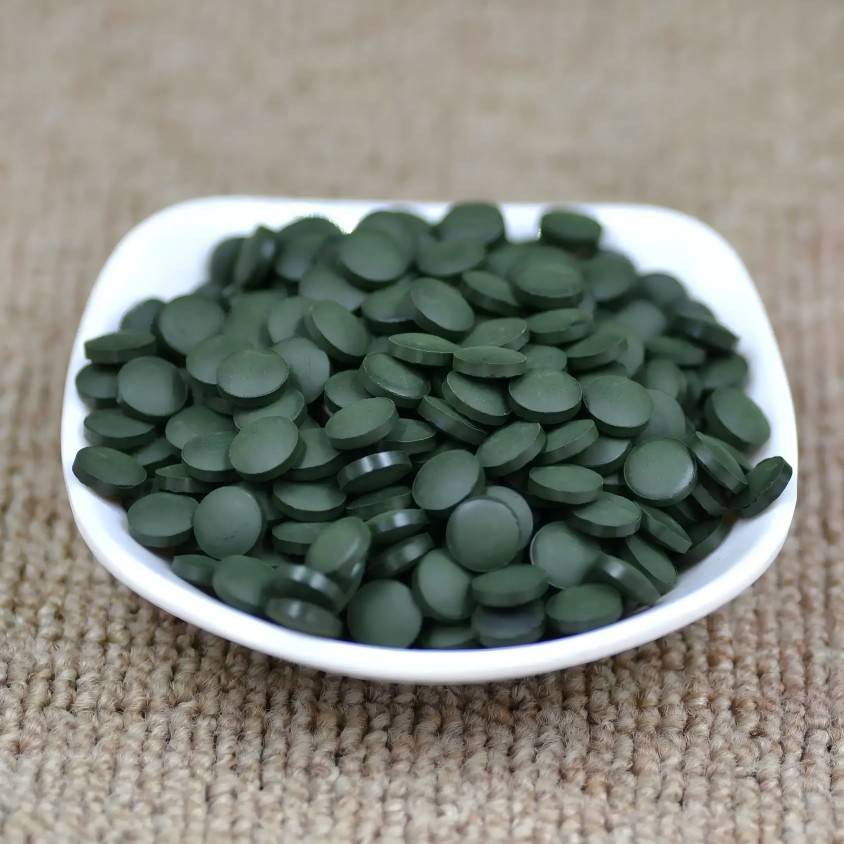
2.2 Application in the food industry
2.2.1 As a health food
Spirulina has been hailed by the FAO as the ideal food for the future of mankind. Spirulina is a rich and balanced protein supplement, and is mostly sold in powder, tablet or pill form. Spirulina foods that have been developed include spirulina powder, tablets, capsules, instant powder, drinks, oral liquids, beer, noodles, health salts, nutritious rice flour, ice cream, sweets, chocolate[8] and biscuits. Spirulina is also an ingredient in orange-flavored crackers and other types of candy, which can increase the protein content by 12% and 18%. It can also be used as an ingredient in protein powder and macaroni (add 10% spirulina). The production of other fermented foods such as cheese, yogurt and tofu also offers many possibilities for the use of spirulina. The use of biochemical processes without enzymes separates the filamentous spirulina into single-cell spirulina, which is easier to prepare into functional nutritional drinks and is easier to digest. In addition, a decolorized spirulina powder (yellowish-white) can be obtained by extraction. It is odorless and tasteless, and is a unique ingredient for many foods such as soups, sauces, doughs, fast food and instant drinks, as well as other foods, so it has a wider range of uses.
2.2.2 As a food additive
Because seaweed itself can provide a rich source of iodide, mineral elements, vitamins, hormones, proteins and many other active ingredients, it can generally be used directly as a nutritional fortification additive[9]. In addition, a variety of food colours can also be extracted from seaweed. For example, the French oil company has extracted food colouring agents such as zeaxanthin (yellow), canthaxanthin (orange-red) and phycocyanin (blue) from spirulina. With the successful domestication and cultivation of spirulina, which is rich in trace elements, the nutritional and health benefits of spirulina have been further enhanced, providing more avenues for the development of new food additives.
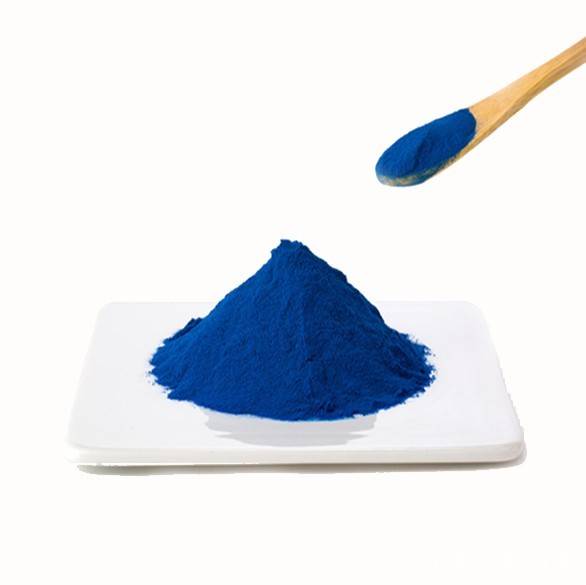
2.3 Application of spirulina in the feed industry
Spirulina can be used as a feed ingredient or green additive. The cell wall of spirulina is mainly composed of protein, with very low cellulose content. It is highly digestible and can be used directly or indirectly as an additive for feeding animals. Its protein is rich in lysine, threonine and sulphur-containing amino acids, which are lacking in cereal proteins. Therefore, the use of spirulina in compound feeds can play a role in “amino acid complementarity” and solve the problem of the low nutritional value of plant proteins. It can promote animal growth, increase immunity, improve production performance, and reduce feed consumption. It has been reported that adding 1% spirulina to the diet of laying hens can deepen the color of the egg yolk and increase the commercial value of the eggs. In aquatic feed, since spirulina is microscopic and composed of single cells, it is very small in diameter and length. It can be used directly as live or dried powder feed for aquaculture or as starter feed for young fish. It has a good feeding effect, and the pellet feed made from it does not sink easily in water, does not agglomerate, does not easily spoil the water quality, and has a good farming effect. It can also enhance the color of seafood [10].
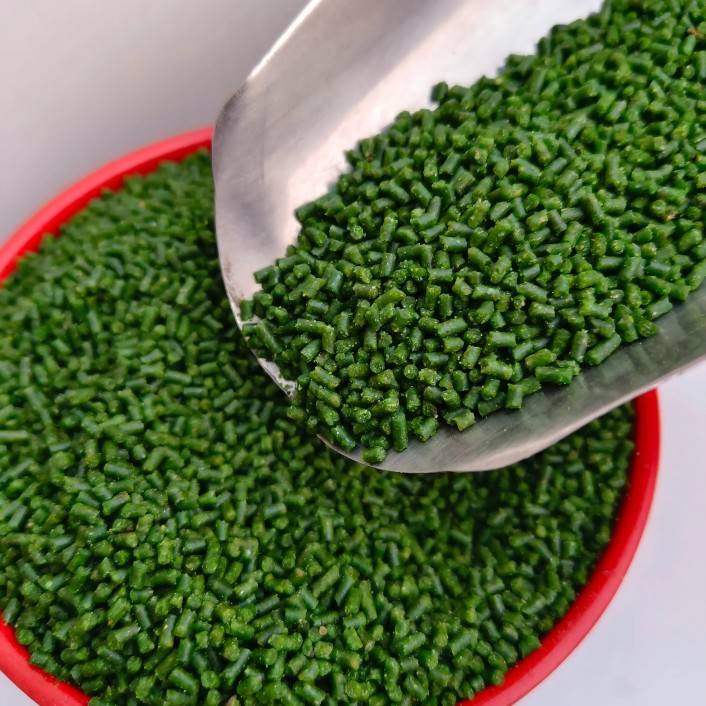
2.4 Application in the cosmetics field
Spirulina can improve the immunity of skin cells, protect the self-regulating function of the skin, prevent moisture loss, resist ultraviolet damage, eliminate free radicals on the skin surface, increase the synthesis of skin collagen, soften the stratum corneum, promote blood circulation and skin regeneration, and can play an anti-wrinkle, sun protection, anti-radiation, whitening, freckle removal, anti-aging role, and can promote hair growth[11]. According to a clinical trial conducted by the Institute of Pharmacology of Beijing Medical University, the dermatology department of Kunming Medical College and other medical cosmetology units on 236 cases, spirulina nutrient solution can provide the skin with amino acids, algin, SOD and other active ingredients, which have the effects of increasing skin elasticity, moisturizing, wrinkle removal and freckle removal.
As spiruliaigh-end cosmetics, spirulina cosmetics will definitely better beautify and benefit mankind.
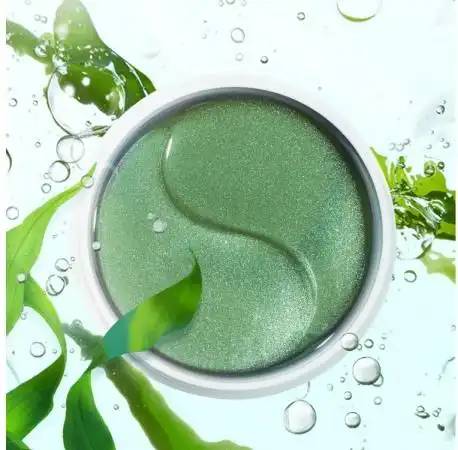
2.5 Energy
From the existing literature, although research and development as a hydrogen energy source is limited to basic discussions, existing research indicates that spirulina not only has a bright future as a food and medicine, but also has attractive application prospects in the research field of biohydrogen production technology for energy development [13].
2.6 Environmental protection
Spirulina has good nutritional and medicinal value, but with the gradual reduction of water bodies suitable for spirulina growth, how to reduce the space required while using industrial wastewater to cultivate spirulina has become a popular research direction in recent years. Because it needs to absorb a large amount of nutrients during growth and reproduction, it has the characteristics of fast growth and reproduction, high adaptability and higher fermentability. Therefore, spirulina is a promising microalgae for wastewater treatment [14]. It is not only buoyant, but also filamentous, which makes it easier to separate from the culture medium and harvest. During growth, it also secretes extracellular bioflocculants, which enhances the wastewater treatment process [15-16].
3 Conclusion
With the rapid development of China's social economy and the improvement of people's living standards, the strengthening of food nutrition awareness and the development of world pharmaceutical science, mass green health foods made from spirulina will continue to appear. At present, the development and utilization of spirulina at home and abroad is mainly concentrated in the four fields of nutritional foods, health care drugs, cosmetics and rare animal feeds. With the attention and research on spirulina in countries around the world, it is believed that in the near future, it will also develop well in the fields of energy development and environmental protection.
References
[1] Wu Wenlong, Yang Zhijuan. Functional factors and research and development progress of spirulina health food [J]. Food Research and Development, 2006, 27(2): 129-131.
[2] Su Nong, Yue Sen. An ideal food source unknown to humans: spirulina [J]. Special Economic Animals and Plants, 2001, 3: 25.
[3] Reddy MC, Subhashini J, Mahipal SV, et al. C-phycocyanin, a selective cyclooxygenase-2 inhibitor, induces apoptosis in lipopolysaccharide-stimulated RAW264.7 macrophages [J]. Biochem. Biophys. Res. Commun., 2003, 304(2): 85–392
[4] Liu Hui, Liu Pengju, Zhang Shaobin, et al. Research and application of spirulina phycobiliproteins [J]. Anhui Agricultural Science, 2006, 34(21): 5463-5464.
[5] Li Quanshun, Jia Qingshu. Biological characteristics of spirulina and its application value [J]. Journal of Shenyang Institute of Education, 2006, 8(2): 124
[6] Gu Tianqing, Zhang Huimiao. Research on the biological characteristics of spirulina cultivated using industrial wastewater, waste gas (CO2) and waste heat [J]. Botanical Bulletin, 1992, 9(2): 47~ 52.
[7] Zhao Zongping. Pharmacological research on spirulina [J]. Medical Herald, 2003, 22(1): 19~20.
[8] Chen Jine. Development and application of spirulina [J]. Food Research and Development, 2007, 9(28): 157.
[9] Zhang Tiehua, Liu Jingbo, Yang Mingduo. Development of spirulina chocolate [J]. Cereals, Oils and Foodstuffs Science and Technology, 2005, 13(2): 12-13.
[10] Liu Huifang, Song Zhigang. Application of spirulina in aquatic animal production [J]. China Feed, 2002, 9: 18-20.
[11] Li Huifang. Spirulina and high-end cosmetics [J]. Daily Chemical Science, 1999, 5: 40-44.
[12] Shen Beiying. The most ideal nutrient source in the 21st century [J]. Cereals, Oils and Fats, 1999, 1:29-30.
[13] Li Quanshun, Xu Chenghai. Research progress on spirulina as a bioenergy source [J]. Energy Conservation, 2005, 8:15-18.
[14] Wu Haijun. Nutritional value of spirulina and its application in the recovery of biological resources [J]. Guangzhou Food Industry Science and Technology, 2003, 19(2): 71-72.
[15] OLGUIN E J. Phy coremediation: key issues for cost-effective nutrient re- moval processes [J]. Biotechnol Adv, 2003, 22(1/2): 81-91.
[16] LODI A, BINAGHI L, SOLISIO C, et al. Nitrate and phosphate removal by Spirulina platensis [J]. J Ind Microbiol Biotechnol, 2003, 30(11): 656-660.


 English
English French
French Spanish
Spanish Russian
Russian Korean
Korean Japanese
Japanese